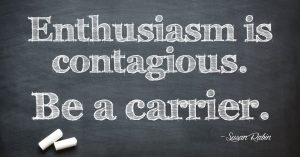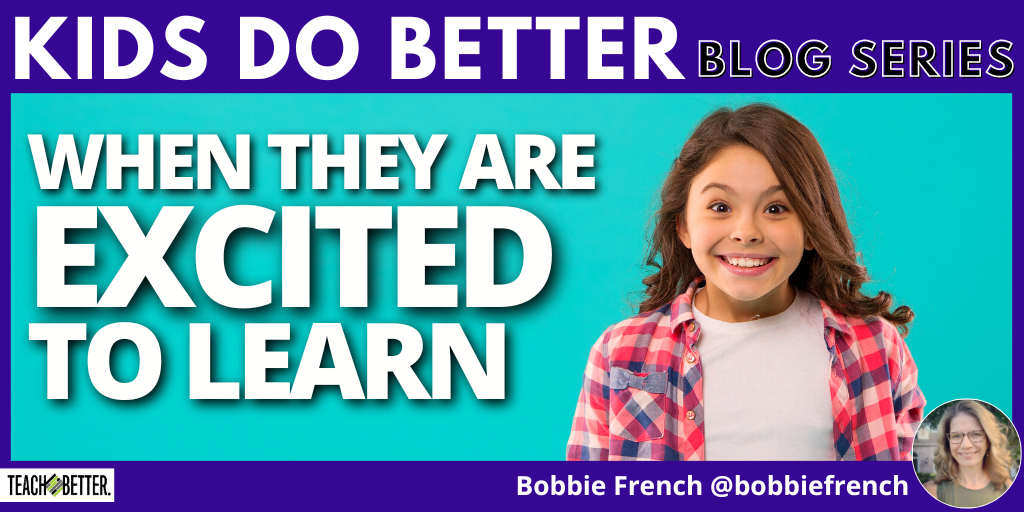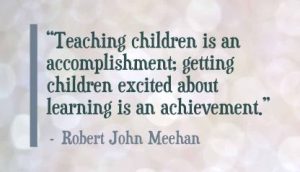TL;DR:
- Creating a culture of excitement leads to a positive learning environment that encourages collaboration, creativity, and critical thinking.
- Excitement is contagious. Learn 7 ways to create an enthusiastic environment and 7 ways to create an enthusiastic lesson.
- Spend time laughing with your students; it is essential to creating a warm and positive classroom culture where students feel comfortable and supported.
Kids Do Better When They Are Excited to Learn
As a student, have you ever found yourself dragging your feet to class, feeling disinterested and unmotivated? Or do you remember those days when you woke up feeling enthusiastic about going to school? The days when you looked forward to learning something new, seeing your friends, and interacting with your teachers? That’s the kind of energy that makes a difference in the classroom.
As an educator, it’s important for us to make sure that our students are excited to come to school and class every day. Kids do better when they are excited to come to class every day and are more likely to engage in the learning process, ask questions, and take ownership of their education.
Why Excitement?
When students are excited to come to class, they are more likely to be engaged in their learning. They will be eager to participate, ask questions, and share their ideas. This enthusiasm can help create a positive learning environment that encourages collaboration, creativity, and critical thinking.
When students are excited about their classes, they are more likely to retain the information that they learn. Research has shown that emotions play a significant role in memory retention, and positive emotions can enhance learning and memory.
As a teacher, I was always excited to come to school. I strived to create an environment where my students felt the same way. My passion for teaching stems from my love for learning. I tried to infuse that love into every lesson. Seeing my students engage with the material, get excited about a new concept, or collaborate on a project is what motivated me to keep coming back every day.
It’s important to create schools and classrooms where students are excited to come to class every day. We know they are more likely to engage in the learning process, ask questions, and take ownership of their education. Click To TweetExcitement is Contagious
When I saw their eyes light up with curiosity, and when they eagerly raised their hands to share their thoughts, I knew that I was doing something right. This excitement is contagious. It made me excited to go to school every day. I still feel that way, but now my goal is to create that excitement and eagerness in each classroom and the whole school building.
I find JOY in seeing the smiles and excitement on students’ faces as they disembark from the busses or emerge from parent drop off. They are full of energy as they talk with friends or run into the building. Imagine our day if students kept that excitement until the end of the day. Better yet, what if we created so much enthusiasm for learning in our school and classrooms that students didn’t want to leave?
Creating an Enthusiastic Environment
Creating a classroom or school environment that elicits enthusiasm from students is crucial for their academic success and overall enjoyment of school. Here are some ways that teachers and school administrators can foster a positive and enthusiastic learning environment.
- Celebrate student successes: Recognizing and celebrating students’ achievements can help boost self-esteem and motivate them to continue working hard.
- Foster a sense of community: Creating a sense of community in the classroom or school can help students feel connected and invested in their learning. This can be achieved through team-building activities, collaborative projects, and extracurricular activities.
- Create a safe and welcoming space: Students are more likely to be enthusiastic about their learning when they feel safe and welcomed in their learning environment. Teachers can create a safe and welcoming space by being approachable, respectful, and responsive to students’ needs.
- Incorporate technology: Incorporating technology into the classroom can help engage students and make learning more interactive and dynamic. This can include using educational apps, interactive whiteboards, and other digital tools.
- Encourage creativity: Allowing students to express their creativity can help them feel more invested in their learning and boost their enthusiasm for school. This can include art projects, creative writing assignments, and open-ended problem-solving tasks.
- Be passionate and enthusiastic: Teachers who are passionate and enthusiastic about their subject matter can inspire students to feel the same way. Teachers can demonstrate their enthusiasm by sharing their own personal stories, connecting the material to real-world situations, and using engaging teaching techniques.
- Encourage student voice and choice: Giving students a say in their learning can help them feel more invested and enthusiastic about the material. This can include allowing students to choose their own research topics, giving them the opportunity to provide feedback on the curriculum, and encouraging them to share their own ideas and perspectives.
Creating an Enthusiastic Lesson
How do we spread that passion and joy to our students in our individual classrooms? Here are some ways to set up your learning to hook students into the lesson and get them excited about the lesson and engaged:
- Start with an engaging hook: Captivate your students’ attention right from the start. Begin your lesson with an interesting question, an intriguing story, or a fascinating visual. Use technology or multimedia resources to create a sensory-rich experience.
- Use storytelling: Humans are wired to respond to stories, so incorporating narratives into your lessons can help capture your students’ attention and make the material more relatable.
- Connect the material to real-life: Students are more likely to be engaged when they can see the relevance of the material to their lives. Make connections between the lesson and their experiences or interests. This helps them understand the value of the material and its impact on their lives.
- Allow for student choice: Students are more likely to be excited about a lesson when they have some control over the process. Offer choices in the way they learn or demonstrate their knowledge. This allows them to feel a sense of ownership over their education.
- Use multimedia: Incorporating videos, images, and other multimedia into your lessons can help create a dynamic learning experience that appeals to multiple learning styles.
- Use humor: Humor is a powerful tool for building rapport and creating a positive learning environment. Sharing a laugh with your students can help them feel more comfortable in the classroom and more open to learning. It’s okay to laugh with your students and show your human side.
- Encourage collaboration: Students learn best when they can bounce ideas off one another. Encourage collaboration and group work. Provide opportunities for students to share their thinking and ideas.
Don’t Forget to Laugh
As teachers, we also need to spend time laughing with our students. It’s essential to create a warm and positive classroom culture where students feel comfortable and supported. Take a few minutes at the beginning or end of class to chat with your students about their interests, hobbies, or weekend plans. This helps create a sense of community, and a sense of belonging and shows your students that you care about them as individuals.
It’s important to create schools and classrooms where students are excited to come to class every day. We know they are more likely to engage in the learning process, ask questions, and take ownership of their education. As educators, it’s our responsibility to create an environment that fosters that enthusiasm. As a school, celebrating student successes, fostering a sense of community, creating a safe and welcoming space, incorporating technology, encouraging creativity, and demonstrating passion and enthusiasm can get students excited. In our classrooms, using engaging hooks, connecting the material to real-life, allowing for student choice, using humor, and encouraging collaboration, we can create a positive and engaging learning experience for our students. And, let’s not forget to spend time laughing with our students to create a warm and supportive school and classroom culture.
About Bobbie French
Bobbie French is an educational leader, presenter and writer from Massachusetts.
Bobbie has been an educator for over 24 years. She has been an elementary guidance counselor, classroom teacher, special education coordinator, Title I Director, Preschool Director and Administrator.
Bobbie is passionate about focusing on the whole child and creating an environment where all students have a sense of belonging. She appreciates and recognizes the hard work of teachers, and is committed to supporting others to be their best for kids every day. Her passion and enthusiasm for creating a positive and engaging school culture is contagious.
Bobbie is also an avid photographer and loves to tell her school’s story.







